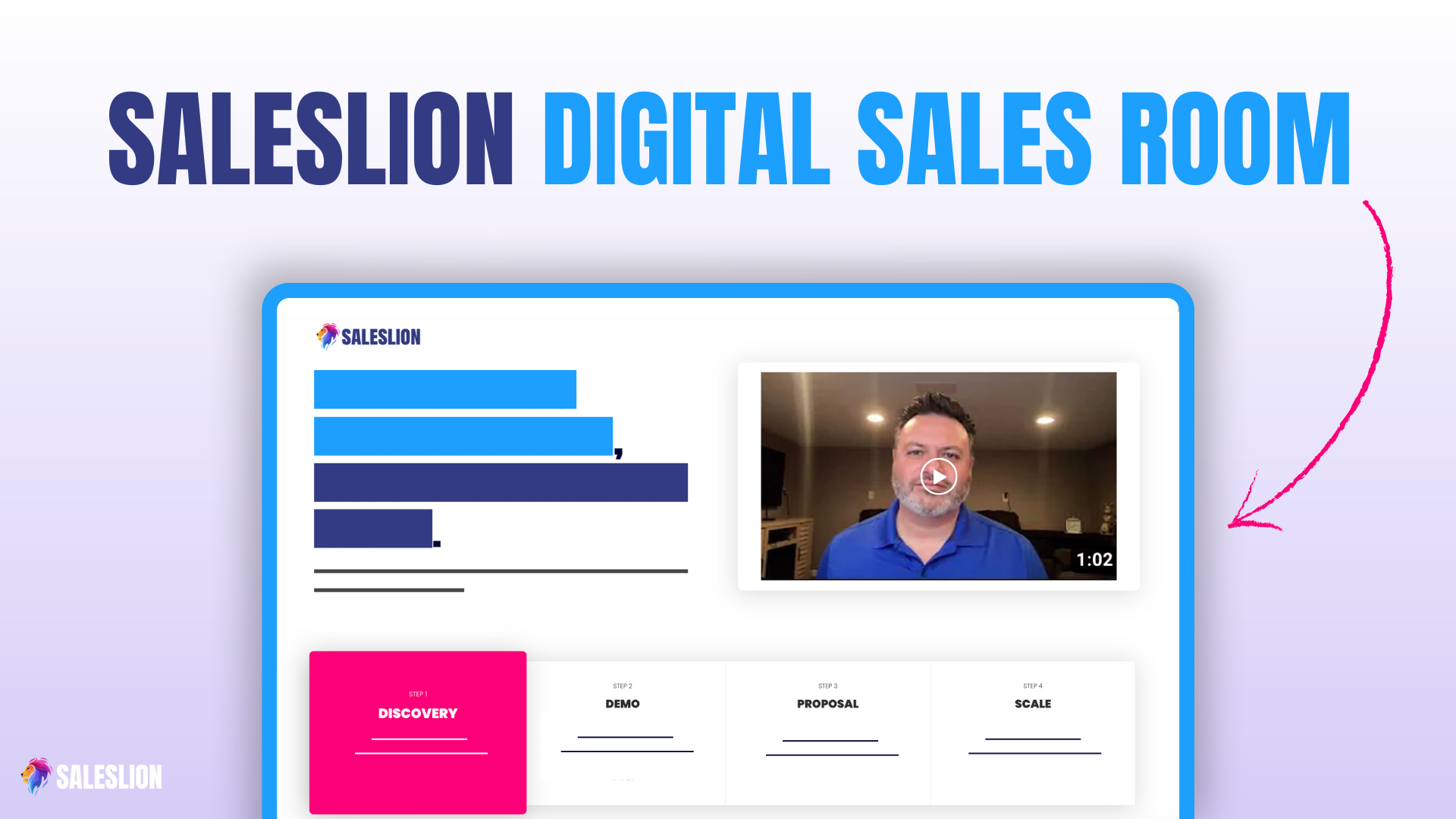In the competitive landscape of B2B organizations, the collaboration between sales and marketing teams is crucial for revenue growth in B2B organizations. Traditionally, these departments have operated in separate silos with distinct objectives and metrics.
Marketing departments focus on building awareness and generating leads and sales teams focus on gathering those leads and converting them into customers.
However, the paradigm is shifting as businesses recognize the power of aligning sales and marketing efforts to create a unified front that maximizes customer engagement and boosts overall revenue.
By aligning these departments, businesses can enhance customer engagement, improve lead generation, and capitalize on cross-selling opportunities. This collaboration ensures consistent messaging, strengthens the brand, and helps organizations stay competitive.
And in today’s digital era, the integration of advanced tools further empowers sales and marketing teams to work together efficiently and achieve shared objectives.
Digital sales enablement tools enhance sales effectiveness and promote sales and marketing collaboration.
They centralize content, facilitate real-time communication, offer training resources, and provide analytics for data-driven decision-making.
Integration with CRM systems and personalization features further optimize sales processes. These tools streamline operations, foster collaboration, and drive revenue growth.
In this article, we will explore the importance of sales and marketing collaboration and the role of digital sales enablement tools in driving revenue growth for B2B organizations.
Explore the Article
- Common Challenges in Sales and Marketing Alignment
- Digital Sales Enablement Tools: Empowering Collaboration
- The Benefits of Sales and Marketing Collaboration
- Best Practices for Effective Sales and Marketing Collaboration
Common Challenges in Sales and Marketing Alignment
But while sales and marketing collaboration is obviously so effective, B2B companies still run into obstacles when it comes to aligning their departments.
Communication Gaps
One of the most common obstacles is poor communication.
Sales and marketing departments often operate in separate silos, leading to communication gaps and a lack of shared goals.
Misalignment in objectives and inadequate communication channels can result in misunderstandings, missed opportunities, and a disjointed customer experience.
An example of a communication gap might be when a marketing team launches a social media campaign without communicating its goals to the sales team. This might result in sales reps being unprepared to address customer inquiries or leverage the campaign effectively.

Differences in Metrics
Another common obstacle to sales and marketing collaboration is simply differences in metrics and performance evaluation.
For example, sales teams care little about MQLs and instead, focus their efforts on SQLs. With marketing teams, it’s the opposite.
Misalignment in metrics and evaluation criteria can potentially create conflicting priorities and hinder team collaboration.
Since sales reps deal with real leads and prospects every day, and marketers deal more with theoretical as opposed to direct exposure, input from the sales team would help marketers better understand the target audience and create more effective marketing campaigns.
Siloed Data
Additionally, sales and marketing teams often have separate databases and systems, resulting in siloed data and limited information sharing.
For instance, if sales teams don’t share user behavior data and analytics with the marketing department, company efforts to generate new leads will be affected.
This lack of integration hampers the ability to have a comprehensive view of customers, inhibits accurate targeting, and restricts effective collaboration on lead nurturing and customer engagement initiatives.
Overall all of the obstacles above can significantly impact revenue growth and B2B sales success. Overcoming these obstacles is crucial to driving revenue growth and achieving success in B2B sales.
Digital Sales Enablement Tools: Empowering Collaboration
Now that we have an understanding of some of the challenges that B2B companies face when trying to align sales and marketing teams, let’s explore some sales tools that can help empower internal collaboration.
Digital sales enablement tools are powerful resources that facilitate collaboration between sales and marketing teams. These tools can streamline communication, centralize content, and provide valuable insights, enhancing the overall effectiveness of sales and marketing efforts.
While there is a wide range of sales enablement tools with varying levels of effectiveness, digital sales rooms are one of the most revolutionary digital sales enablement tools available.
Some key features of digital sales enablement tools like digital sales rooms include content management and distribution, sales team members training and onboarding, sales analytics and customer behavior tracking, and collaboration platforms.

Check out these other resources for more in-depth information on the key features and functionalities of sales enablement software and the Saleslion digital sales room.
Centralized and accessible content.
Digital sales enablement tools provide a centralized platform where sales and marketing teams can store and access all relevant content, including sales collateral, marketing materials, product information, and customer data.
This centralized platform ensures that teams have easy access to the most up-to-date and relevant content, eliminating the need for time-consuming searches and ensuring consistency across teams. This accessibility improves collaboration, saves time, and enhances overall productivity.
Real-time communication and feedback.
Digital sales enablement tools often include communication features such as chat systems, collaborative workspaces, or project management tools.
These tools facilitate real-time communication and feedback exchanges between sales and marketing teams. Instant messaging allows for quick information sharing, clarifications, and updates, fostering effective collaboration and enabling prompt responses to changing market conditions or customer needs.
The ability to provide feedback in real-time strengthens the partnership between the teams, leading to better alignment and improved outcomes.
Data-driven insights for informed decision-making.
Digital sales enablement tools offer analytics and reporting capabilities that provide valuable data-driven insights. These tools capture and analyze sales and marketing data, including customer interactions, content engagement, and conversion rates.
By leveraging these insights, sales and marketing teams can make informed decisions, identify trends, and optimize their strategies.
Data-driven insights empower teams to refine their messaging, target the right prospects, and tailor their efforts to maximize effectiveness, ultimately leading to improved conversion rates and revenue growth.

Improved sales productivity and effectiveness.
Digital sales enablement tools streamline various sales processes, reducing administrative burdens and enhancing sales productivity. These tools automate repetitive tasks, such as content creation or proposal generation, freeing up valuable time for sales teams to focus on building relationships and closing deals.
By having quick access to relevant content and resources, sales representatives can deliver more personalized and compelling sales pitches, increasing their effectiveness in engaging prospects and converting leads into customers.
The result is improved sales performance, increased efficiency, and higher revenue generation.
The Benefits of Sales and Marketing Collaboration
Aligning sales and marketing efforts offers several advantages that contribute to the overall success of a business. Here are key benefits in terms of lead generation, customer engagement, revenue growth, and brand representation:
Improved lead generation and nurturing.
Sales and marketing collaboration results in more effective lead generation and nurturing strategies, driving higher-quality leads into the sales funnel.
Enhanced customer engagement and conversion rates.
Aligning sales and marketing efforts creates a cohesive customer experience, increasing engagement and boosting conversion rates throughout the buyer’s journey.
Increased revenue through upselling and cross-selling opportunities.
Sales and marketing collaboration efforts uncover opportunities for upselling and cross-selling, maximizing customer lifetime value, and driving revenue growth.
Streamlined messaging and consistent brand representation.
Alignment ensures consistent messaging and brand representation across all touchpoints, reinforcing brand recognition, trust, and a cohesive brand experience.
Impact of Collaboration on Overall Business Performance and Competitive Advantage
As stated before, without sales and marketing collaboration, B2B businesses will not be able to optimize their sales efforts.
The convergence of sales and marketing functions not only enhances internal coordination but also presents a cohesive and compelling message to customers. By aligning these departments, your B2B company can generate a seamless customer journey, nurture leads more effectively, and capitalize on cross-selling and upselling opportunities.
Furthermore, a harmonized approach ensures consistent brand representation and messaging, reinforcing the organization’s credibility and establishing a strong market presence.
Successful sales and marketing collaboration enables B2B organizations to unlock revenue potential through a holistic understanding of customer needs, enhanced customer experiences, and optimized sales strategies. It empowers businesses to identify and capitalize on market trends, respond to customer demands promptly, and outperform competitors.
Best Practices for Effective Sales and Marketing Collaboration
To foster collaboration between sales and marketing teams, it is essential to implement actionable steps and strategies that promote alignment and cooperation. Below are some best practices to consider.
Establish Shared Goals and Metrics
Setting common goals and metrics is crucial to aligning the efforts of sales and marketing teams. By defining objectives that both teams can work towards, such as increasing lead conversion rates or revenue growth, you create a shared sense of purpose.
This alignment ensures that both teams are working towards a unified vision and enables them to prioritize activities that contribute to overall success.

Encourage Regular Communication and Joint Planning Sessions
Open and regular communication is vital for successful collaboration. Encourage sales and marketing teams to engage in frequent communication and hold joint planning sessions.
These sessions provide an opportunity for teams to share insights, align strategies, and coordinate efforts. By fostering collaboration in the planning phase, teams can ensure that messaging, campaigns, and initiatives are well-aligned and mutually supportive.
Implement a Feedback Loop for Continuous Improvement
Establishing a feedback loop between sales and marketing teams is critical for continuous improvement. Encourage teams to provide feedback on lead quality, content effectiveness, and campaign performance.
Regular feedback sessions enable teams to learn from each other’s experiences, make data-driven adjustments, and refine strategies for better outcomes.
This iterative process fosters collaboration and helps teams optimize their joint efforts.
Foster a Culture of Collaboration
Creating a culture that values collaboration and knowledge sharing is essential for long-term success. Encourage teams to share insights, success stories, and best practices. This can be done through regular team meetings, workshops, or digital sales enablement tools that facilitate information exchange.
By fostering a culture of collaboration, teams can tap into the collective expertise and leverage shared knowledge to drive innovation and growth.
Furthermore, it is important to emphasize the significance of leadership support and buy-in for successful alignment between sales and marketing. Leadership plays a critical role in promoting collaboration by setting the tone, facilitating communication, and providing the necessary resources and support.
Leaders should actively encourage collaboration, recognize and reward joint successes, and provide the guidance needed to overcome any challenges that arise during the alignment process.
When leaders demonstrate their commitment to collaboration, it sets a strong example for the entire organization and reinforces the importance of sales and marketing alignment as a strategic priority.
By implementing these best practices and ensuring leadership support, organizations can establish a strong foundation for effective sales and marketing collaboration. This alignment leads to improved communication, and enhanced efficiency, and ultimately drives revenue growth and success in the competitive B2B landscape.

In conclusion, by implementing best practices for effective sales and marketing collaboration, fostering a culture of teamwork, and securing leadership support, your B2B company can unlock the full potential of your sales and marketing efforts, driving revenue growth and achieving long-term success.
If you are interested in learning more about how our digital sales room can help improve sales and marketing collaboration in your business, reach out to us today!